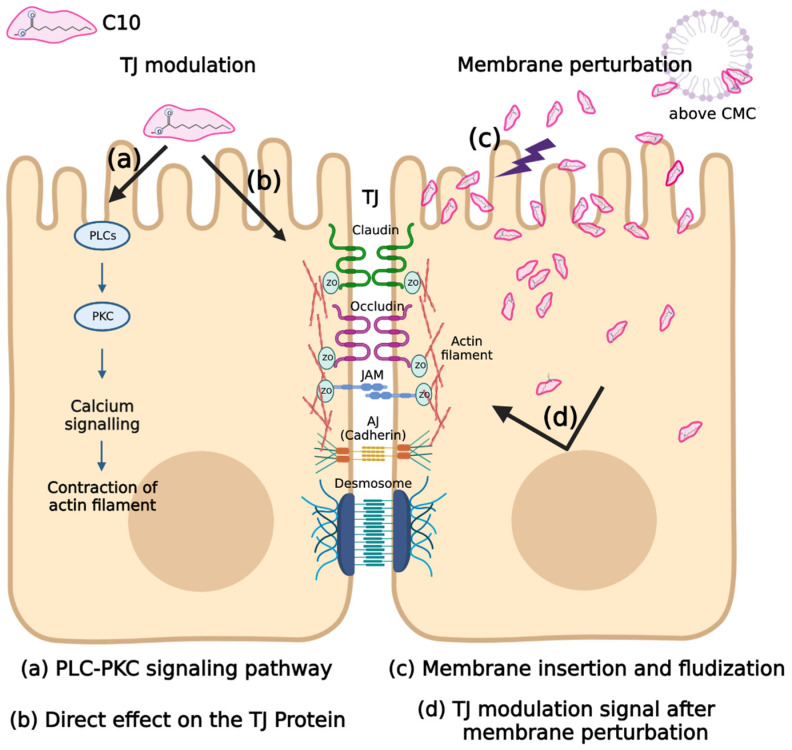Figure 3.
Hypotheses on the mechanism of C10. The diagram shows the simple classification of the mechanisms of C10 proposed to date. It is essentially divided into tight junction (TJ) modulation (left) and membrane perturbation mechanisms [68]. The TJ modulation hypothesis is divided into a Ca2+-dependent PLC-PKC pathway mechanism (a) and a Ca2+-independent TJ protein modulation (b). As per the membrane perturbation hypothesis, the mechanism of action of C10 can be its insertion into the membrane to fluidize the membrane and enhance absorption into the transcellular pathway (c), and an unknown TJ modulation signal due to membrane perturbation (d).

